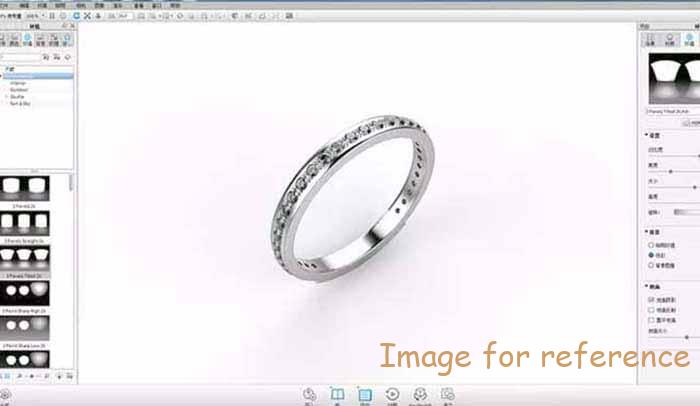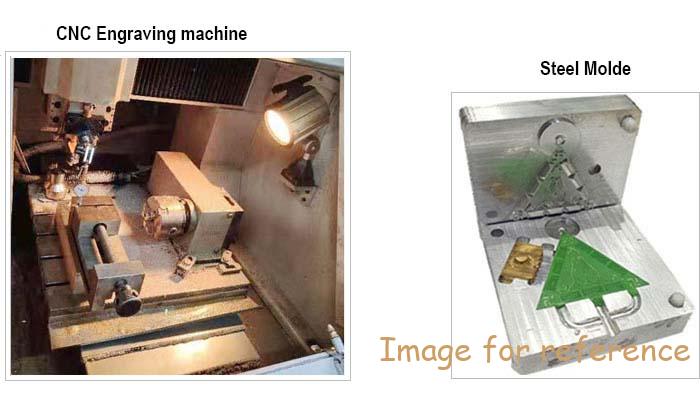Os minerais de pedras preciosas geralmente têm um valor fixo, forma de cristal independente, e o padrão da rede cristalina é determinado pelas propriedades físicas do mineral. Normalmente, a forma do cristal da pedra preciosa afetará a forma como a pedra preciosa é cortada.. O sistema cristalino de gemas é dividido em: Isométrico, Tetragonal, Hexagonal, Trigonal, Ortorrômbico, e Monoclínica. Monoclínica), Triclínica (Triclínica), todas as gemas equiaxiais são gemas de refração única, o resto dos sistemas cristalinos são gemas birrefringentes, as características de cada sistema cristalino são diferentes.
1. Sistema de cristal isométrico
Os três eixos cristalinos do cristal cristalino são perpendiculares entre si e têm o mesmo comprimento, por isso é chamado de sistema de cristal equiaxial. Porque a aparência é aproximadamente cúbica, também é chamado de sistema de cristal cúbico (Cúbico). O cristal octaédrico de diamante é um exemplo do sistema de cristal equiaxial.
2. Sistema tetragonal
Os três eixos cristalinos do cristal são perpendiculares entre si, um dos quais tem comprimentos diferentes, e os outros dois têm o mesmo comprimento. A aparência é um prisma de quatro lados, pirâmide e pirâmide dupla. O cristal bipiramidal tetragonal de zircão (comumente conhecido como jacinto) é um exemplo típico do sistema cristalino tetragonal.
3. Hexagonal e Trigonal
Tanto o sistema de cristal hexagonal quanto o sistema de cristal trigonal têm quatro eixos de cristal. Os três eixos se cruzam em 60 graus ou 120 graus em um plano, e o outro eixo é perpendicular ao plano onde os três eixos se cruzam. Sua aparência é muito fácil de distinguir, com seis lados nas laterais. O exemplo típico do sistema de cristal hexagonal é o berilo, enquanto o mais comum do sistema de cristal trigonal é o cristal.
4. Sistema ortorrômbico
Os três eixos do cristal são perpendiculares entre si, mas todos têm comprimentos diferentes, e a aparência é uma estrutura retangular colunar ou em forma de placa. O cristal colunar de Topázio é um exemplo típico deste sistema cristalino.
5. Sistema monoclínico
O sistema monoclínico possui três eixos cristalinos, dois dos quais são perpendiculares entre si e o terceiro eixo do cristal é diferente dos outros dois eixos. Espodumênio (Spodume) é uma pedra preciosa pertencente ao sistema cristalino monoclínico.
6. Sistema triclínico
A simetria do sistema triclínico é a mais baixa, os três eixos do cristal não são perpendiculares entre si, e os comprimentos não são iguais. Turquesa (Turquesa) os cristais pertencem a este sistema cristalino.
OEM/ODM Jóias Fabricante Design personalizado suas próprias jóias
Vamos começar : mo@kingjy.com
Guangzhou Jingying Focus em colares de anel de atacado personalizados Brincos Brincos de prata esterlina 925 joia,Gold de prata esterlina banhado com 18k,14K,24K ouro amarelo,Ouro branco e ouro rosa.,marca de logotipo ou outras palavras por gravação a laser de acordo com o requisito do cliente.
Nossa capacidade de produção mensal está fazendo 50,000 Brincos de colar de pulseiras,Jewelry Chain Shop,lojas de saída,atacadista de jóias,Companhia de comerciantes e joalheria,Profissional Fornecer Criar jóias personalizadas e produção em massa de alta qualidade 925 Serviço de jóias de prata esterlina.
OEM/ODM Jóias Fabricante Design personalizado suas próprias jóias
Vamos começar : mo@kingjy.com
Guangzhou Jingying Focus em colares de anel de atacado personalizados Brincos Brincos de prata esterlina 925 joia,Gold de prata esterlina banhado com 18k,14K,24K ouro amarelo,Ouro branco e ouro rosa.,marca de logotipo ou outras palavras por gravação a laser de acordo com o requisito do cliente.
Nossa capacidade de produção mensal está fazendo 50,000 Brincos de colar de pulseiras,Jewelry Chain Shop,lojas de saída,atacadista de jóias,Companhia de comerciantes e joalheria,Profissional Fornecer Criar jóias personalizadas e produção em massa de alta qualidade 925 Serviço de jóias de prata esterlina.













